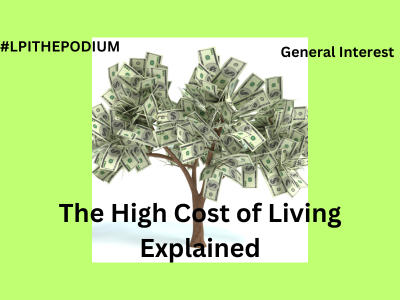
Understanding What Drives Higher Prices Can Help Improve Retirement Planning by Kari Middleton, PPC
According to the Employee Benefit Research Institute’s 2024 Retirement Confidence Survey, 83% of workers are concerned that the higher cost of living will make it harder to save as much as they want toward retirement. If you’re like most retirement savers, you’ve likely had concerns over the rising cost of living over the past few years. And for younger workers, it’s the first time you’ve experienced an elevated inflation rate as an investor.
The cost of living, which reflects the amount of money required to maintain a certain standard of living, is influenced by several forces. Better understanding these factors and how they fit into your retirement planning process can help you prepare for future financial challenges. It can also motivate you to create an investment strategy that aims to stay ahead of rising prices over the long term. In addition, it can help you forecast a more accurate budget to meet your needs during retirement.
Key Forces Behind the Rising Cost of Living
- Inflation is the general increase in prices of goods and services over time. It reduces purchasing power, meaning that consumers need more money to buy the same amount of goods and services. Inflation can be driven by excess demand over supply, rising production costs or other factors.
- Housing costs. Housing is often the largest component of living expenses. Rising demand for housing, limited supply, and increased costs of construction and land can drive up home prices and rents. Urbanization and population growth further worsen this issue, particularly in major cities.
- Wages and labor costs. When wages increase, businesses may pass these costs onto consumers in the form of higher prices. While wage growth can boost living standards, if it outpaces productivity, it can contribute to inflation and higher living costs.
- Energy prices. Energy costs, including electricity, gas and fuel, significantly impact the cost of living. Fluctuations in global oil prices, geopolitical tensions and supply constraints can lead to higher energy costs, affecting transportation, heating and manufacturing expenses.
- Healthcare costs. Rising healthcare costs, due to advancements in medical technology, increased demand for services and an aging population, contribute significantly to the overall cost of living. Higher insurance premiums and out-of-pocket expenses add to household financial burdens.
- Education expenses. The cost of education, including tuition fees, books and related expenses, has been rising steadily. This places a financial strain on families and students, impacting their overall cost of living.
- Supply chain disruptions. Events such as natural disasters, pandemics and trade conflicts can disrupt product supply chains, leading to shortages and higher prices for goods. These disruptions affect everything from food to consumer electronics, contributing to a higher cost of living.
Kari Middleton is a Financial Advisor and Consultant in the Coachella Valley. Please reach out to schedule a complimentary appointment today at 760.409.2864 kari.middleton@lpl.com www.karimiddleton.com CA#0C98340 Registered Investment Advisory LPL Financial Member FINRA SIPC.
Informational Sources: Nationwide: “How Does Inflation Affect Your Cost of Living” (March 26, 2024); Investopedia: “How Inflation Affects Your Cost of Living” (October 26, 2023); SoFi: “The 7 Factors That Cause Inflation” (September 28, 2023).
LPL Financial and its advisors are only offering educational services and cannot offer participants investment advice specific to their particular needs. If you are seeking investment advice specific to your needs, such advisory services must be obtained on your own separate from this educational material.
Categorized in: General
| << previous | next >> |








